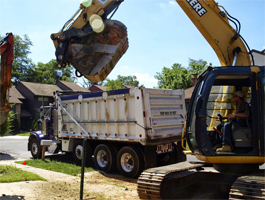 Soil remediation
Soil remediation
The goal of remediation is to obtain an NFA (No Further Action) letter from the NJDEP. The traditional method excavating and removing the soil is still the most commonly used method for remediating contaminated soil and from residential site. Excavating and removing the soil is usually the least expensive and quickest method to remove contamination and obtain a No Further Action Letter. However, the impact to the property is a clear disadvantage to this method. Moore’s Tank Service will work hard to restore your property to its previous condition.
Ground Water Remediation
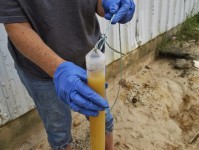
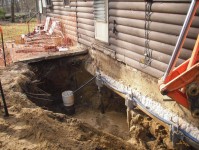 If ground water is encountered in the excavation activities, a ground water investigation must be conducted according to NJDEP regulations. In many cases ground water contamination associated with residential tanks can be remediated by removing the contaminated soil in the water-saturated zone. This involves pumping the water in the open excavation. After the excavation has been completed and the hole has been backfilled with clean fill, the ground water will have to be tested. We test the water using temporary sump or monitoring well, after the contaminated soil has been removed and the excavation backfilled.
If ground water is encountered in the excavation activities, a ground water investigation must be conducted according to NJDEP regulations. In many cases ground water contamination associated with residential tanks can be remediated by removing the contaminated soil in the water-saturated zone. This involves pumping the water in the open excavation. After the excavation has been completed and the hole has been backfilled with clean fill, the ground water will have to be tested. We test the water using temporary sump or monitoring well, after the contaminated soil has been removed and the excavation backfilled.
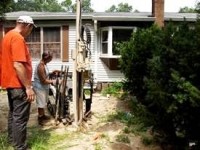 Delineations
Delineations
Prior to staring a remedial activities the size of the contamination plume should be identified. This is accomplished by advancing soil borings around the perimeter of the former underground tank location. The vertical and horizontal dimensions of the contamination plume are identified. Once this is accomplished a remediation plan can be put together.
Click here to view our Delineation Map.
Structural Support
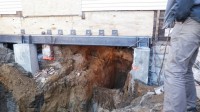
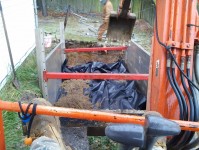 Occasionally soil contamination extend under the foundation of the property. When this occurs, a structural support system must be installed to allow excavating under the house. The most commonly used supports are helical piers which are driven deep in the ground and attached permanently to the foundation. This permits excavating under the house while holding the house in place. We have installed helical piers on many homes and successfully supported the home in place. Our engineer will design a custom support plan for your home before any work is performed.
Occasionally soil contamination extend under the foundation of the property. When this occurs, a structural support system must be installed to allow excavating under the house. The most commonly used supports are helical piers which are driven deep in the ground and attached permanently to the foundation. This permits excavating under the house while holding the house in place. We have installed helical piers on many homes and successfully supported the home in place. Our engineer will design a custom support plan for your home before any work is performed.
When contamination is close to but no under the house we have use shoring boxes that can be assembled in the ground next to the house’s foundation. These boxes are a much less expensive alternative to helical piers.
Alternative Technology
The alternative to excavating and removing contaminated soil is to treat the soil in place. This can be accomplished by injecting substances into the subsurface to stimulate the break down the petroleum contaminates. While you can treat contaminates in difficult to access areas with minimal impact to the surface, the downside is that the process is time consuming and the costs can be open-ended.
NJDEP Reporting and No Further Action Letters
Moore’s tank Services is Licensed by the NJDEP in Tank Closure, Subsurface Evaluation and Unregulated Underground Heating Oil Tank (UHOT). The NJDEP UHOT program is tasked with fast track processing of Remedial Action Reports from leaking residential oil tanks. MTS has obtained over 100 No Further Action Letters from the NJDEP for our clients. Click here to view NFA document.


